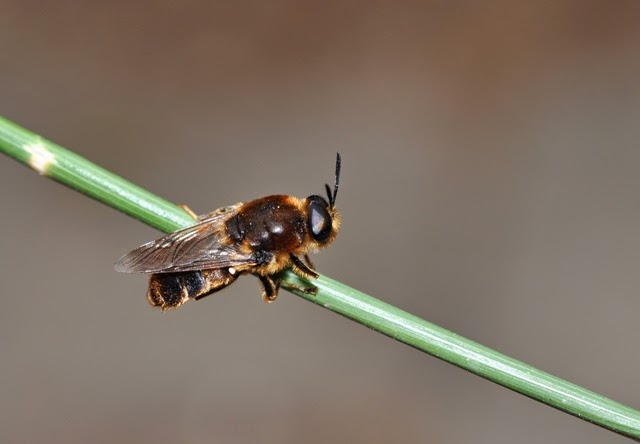A carob tree is either male or female and
when it flowers the male tree needs an insect to transfer the pollen to the
flowers of a female tree. Nothing unusual in this because the majority of
flowering plants make use of insects to ensure that pollination takes place.
Carob trees rely on flies. They attracting by producing a strong scent of
rotting vegetation which can be smelt from several metres away. Flies are
probably equipped to detect the odour from further away than we can.
When a fly lands on a male flower it starts
walking about and in the process ends up with the carob’s pollen attached to
its body. If it visits the flowers of a female tree some or all the pollen
grains on its body are detached and if they are in the right spot fertilise the
flower.
Not all plants rely on animals for
pollination. About ten percent of all flowering plants rely on physical factors
such as wind. Wind pollination is mainly used by grasses and conifers. Most
aquatic plants depend on the surrounding water to transfer their pollen.
Together plants make use of at least
200,000 species of animals to pollinate them. They cannot rely on chance for an
insect to land on them so they have evolved special traits to attract them.
Most flowers have coloured petals that make
the flowers more visible to insects.
Many petals have patterns which are only
visible under ultraviolet light. Humans cannot see UV light and what looks like
a mono-coloured petal to us looks like an airport runway to an insect with lines
which lead the bees to their nectar and pollen.
Night-flowering plants usually have large
white flowers which are shaped like a funnel. They are usually strongly scented
flowers to attract bats and moths.
Plants that are pollinated by birds are
usually red and do not produce any scent as most birds have a weak sense of
smell.
Plants that are visited by a wide variety
of insects often risk wasting their pollen as after visiting a flower of a
particular species an insect might visit the flower of another species. Some
plants, such as the orchids, have become specialised to attract just one
species of insect.
Bees, of which the honey bee is but one of
thousands of species, are the most important pollinators of cultivated plants.
It has been estimated that thirty percent of the food that we need depends on
honey bees for pollination and if honey bees were to disappear we would find it
very difficult to find produce enough food.
This article was published on 4 December 2014,

.JPG)



.jpg)












